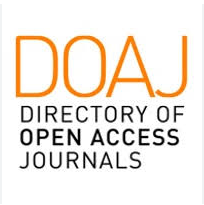Time Series Synchronous Validity Analysis of Oil Exchange Rate Changes Predicted by Neural Network Based on Keyword Research
Abstract
Oil is one of the most important raw materials in the world economy. It is used in almost every segment, logistics, production, delivery of services or delivery of service providers to the service location, etc. In short, it involves the entire economy, which is why the market reacts very sensitively to any volatility or price increase. In the case of large users, the importance is clear, but it also has a great influence in the residential segment, as it affects the elements of the consumer basket, as well as changes the cost of commuting to work, etc. Thus, it is important for actors to be able to prepare for change, if there is a larger fluctuation, they can make their economic decisions in light of this, thus avoiding vulnerability and minimizing losses resulting from volatility. The oil distributors, or more precisely the producers, operate in an oligopoly market, where in many cases they coordinate their decisions and change their production volumes, which increases the uncertainty of the forecast. In the course of our study, we analyse the articles of leading economic journals by keyword research, and we apply several other variables during the forecasting with the Neural Network, and then we compare the co-movement of the resulting time series with the volatility of the real oil price, thus estimating how predictable the changes are for actors with non-confidential information. The time series analysis is carried out using several methods, thereby avoiding partiality, and inferring how this system is suitable for predicting real and not necessarily expected market movements in time, thus for timing our economic decisions, so that the resulting negative impact is as small as possible.
References
Alaminos, D., Esteban, I., Salas, M.B. & Callejón, A.M., 2020. Quantum Neural Networks for Forecasting Inflation Dynamics, Journal of Scientific & Industrial Research. (79) 103-106. https://doi.org/10.56042/jsir.v79i2.68439
Baker, M.P. & Wurgler, J.A., 2007. Investor Sentiment in the Stock Market. SSRN Electronic Journal. https://doi.org/10.2139/ssrn.962706
Barberis, N., Shleifer, A. & Vishny, R., 1998. A model of investor sentiment. Journal of Financial Economy. (4) 307-343.
Dadgar Y., Keshavarz Gh. & Tyataraj A., 2006. The Analysis of Relationship Between Inflation and Economic Growth in Iran, Journal of Economic Literature (5) 59-88.
Daniel, K. & Titman, S. (1996). Evidence on the Characteristics of Cross Sectional Variation in Stock Returns. The Journal of Finance, 52(1), 1-33. https://doi.org/10.2307/2329554
DeLong, J.B., Shleifer, A., Summers, L.H. & Waldmann, R.J., 1990. Noise trader risk in financial markets. Journal of Political Economy. (98), 703-738.
Fama, E.F. & French, K.R., 1993. Common risk factors in the returns on stocks and bonds. Journal of Financial Economics, 33(1), 3-56. https://doi.org/10.1016/0304-405x(93)90023-5
Fama, E.F. & French, K.R., 1996. Multifactor Explanations of Asset Pricing Anomalies. The Journal of Finance. 51(1), 55-84. https://doi.org/10.1111/j.1540-6261.1996.tb05202.x
Fama, E.F., French, K.R., 1997. Industry cost of equity. Journal of Financial Economy. (43), 153–193.
Fan, Y., Liang, Q. & Wei, Y.M., 2008. A generalized pattern matching approach for multi-step prediction of crude oil price. Energy Economics, 30(3), 889-904. https://doi.org/10.1016/j.eneco.2006.10.012
Galeshchuk, S. & Demazeau, Y., 2017. Forecasting hungarian forint exchange rate with convolutional neural networks. International Conference on Behavioral, Economic, Socio-Cultural Computing (BESC). https://doi.org/10.1109/besc.2017.8256358
Gupta, R., & Kabundi, A. (2011). A large factor model for forecasting macroeconomic variables in South Africa. International Journal of Forecasting, 27(4), 1076-1088. https://doi.org/10.1016/j.ijforecast.2010.10.001
Heidari H. & Parvin S., 2009. Modeling and Forecasting Iranian Inflation with Time Varying BVAR Models, Iranian Journal of Economic Research (36) 59-84.
Jammazi, R. & Aloui, C., 2012. Crude oil price forecasting: Experimental evidence from wavelet decomposition and neural network modeling. Energy Economics, 34(3), 828-841. https://doi.org/10.1016/j.eneco.2011.07.018
Kamstra, M.J., Kramer, L.A. & Levi, M.D., 2000. Winter Blues: A SAD Stock Market Cycle. SSRN Electronic Journal https://doi.org/10.2139/ssrn.208622
Kumar, M., Moorthy, U. & Perraudin, W., 2003. Predicting emerging market currency crashes. Journal of Empirical Finance, 10(4), 427-454. https://doi.org/10.1016/s0927-5398(02)00068-3
Langcake, S. & Robinson, T., 2017. Forecasting the Australian economy with DSGE and BVAR models. Applied Economics, 50(3), 251-267. https://doi.org/10.1080/00036846.2017.1319558
Madhou, A., Sewak, T., Moosa, I. & Ramiah, V., 2019. Forecasting the GDP of a small open developing economy: an application of FAVAR models. Applied Economics, 1–12. https://doi.org/10.1080/00036846.2019.1679346
Mahdiani, M.R. & Khamehchi, E., 2016. A modified neural network model for predicting the crude oil price. Intellectual Economics, 10(2), 71–77. https://doi.org/10.1016/j.intele.2017.02.001
Moshiri, S. & Cameron, N., 2000a. Neural network versus econometric models in forecasting inflation. Journal of Forecasting, 19(3), 201-217. https://doi.org/10.1002/(sici)1099-131x(200004)19:3<201::aid-for753>3.0.co;2-4
Naderi, M., Khamehchi, E. & Karimi, B., 2018. Novel statistical forecasting models for crude oil price, gas price, and interest rate based on meta-heuristic bat algorithm, Journal of Petroleum Science and Engineering, https://doi.org/10.1016/j.petrol.2018.09.031
Neal, R. & Wheatley, S.M., 1998. Do Measures of Investor Sentiment Predict Returns? The Journal of Financial and Quantitative Analysis, 33(4), 523. https://doi.org/10.2307/2331130
Nordhaus, W.D., 2011. The Economics of Tail Events with an Application to Climate Change. Review of Environmental Economics and Policy, 5(2), 240-257. https://doi.org/10.1093/reep/rer004
Onimode, B., Alhassan, J., and Adepoju, S. (2015). Comparative study of inflation ratesforecasting using feed-forward artificial neural networks and auto-regressive (ar) models. International Journal of Computer Science Issues, 12.
statista.com, Distribution of oil production worldwide in 2021, by region [online] https://www.statista.com/statistics/277621/distribution-of-global-oil-production-by-region/ (2023.05.10.)
Subecz, Z., 2019. Event Detection and Classification in Natural Texts, Gradus 6(1), 16-21.
Swaminathan, B., 1996. Time-Varying Expected Small Firm Returns and Closed-End Fund Discounts. Review of Financial Studies, 9(3), 845-887. https://doi.org/10.1093/rfs/9.3.845
Thakur, G.S.M., Bhattacharyya, R. & Mondal, S.S., 2016. Artificial Neural Network Based Model for Forecasting of Inflation in India. Fuzzy Information and Engineering. 8(1), 87-100. https://doi.org/10.1016/j.fiae.2016.03.005
Tkacz, G., 2001. Neural network forecasting of Canadian GDP growth. International Journal of Forecasting, 17(1), 57–69. https://doi.org/10.1016/s0169-2070(00)00063-7


























